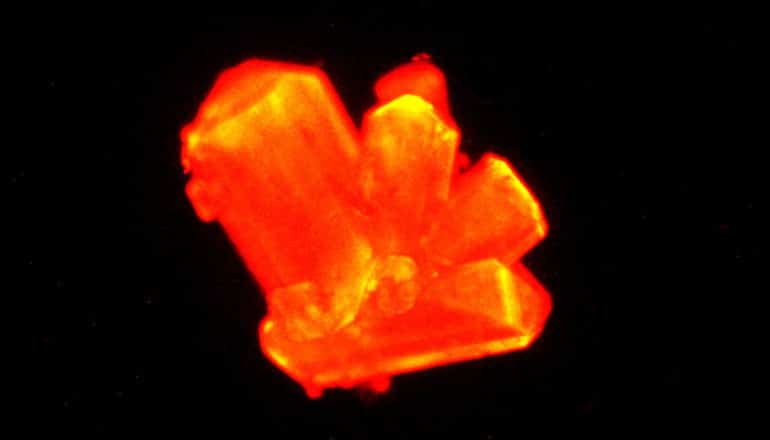
Scientists can manipulate curium, one of the heaviest known elements, to a greater degree than previously thought.
A team of researchers has demonstrated how curium—element 96 in the periodic table and one of the last that’s visible to the naked eye—responds to high pressure resulting from squeezing a sample between two diamonds.
The team finds that the behavior of curium’s outer electrons—which influence its ability to bond with other elements—can be altered by shortening the distance between it and surrounding lighter atoms. The findings appear in the journal Nature.
“This was not anticipated because the chemistry of curium makes it resistant to these types of changes,” says study co-leader Thomas Albrecht-Schmitt, professor of chemistry at Florida State University. “In short, it is quite inert.”
Although only certain curium compounds exhibited changes, it was still interesting to scientists because curium is normally completely resistant to having its properties altered.
Albrecht-Schmitt’s work is part of his lab’s overall mission to better understand the heavier, or actinide, elements at the bottom of the periodic table. In 2016, he received funding from the Department of Energy to form the Center for Actinide Science and Technology to focus on accelerating scientific efforts to clean up nuclear waste.
Despite their presence on the periodic table, the heavier elements still largely remain a mystery to scientists, particularly compared to lighter elements like oxygen or nitrogen.
“It’s an exciting experiment that showed that we have much greater control of the chemistry of these difficult to control elements than previously thought,” Albrecht-Schmitt says.
“The curium(3+) ion we studied has a half-filled outer electron shell that is very difficult to engage in chemical bonding,” says study co-leader Jochen Autschbach, professor of chemistry at the University at Buffalo.
“An integrated experimental and theoretical approach showed that the application of high pressure to a crystal containing curium(3+), along with sulfur-organic and ammonium ions, causes the outer shell of curium to participate in covalent chemical bonding with sulfur. This finding may help guide new ways of studying the mysterious behavior of chemically resistant actinide shells.”
In the new study, Autschbach’s group carried out calculations that helped to explain what happened during the high-pressure experiments, revealing details about how curium behaves chemically, when compounds containing the element are squeezed between diamonds, and how this influences the color of light emitted by curium.
The team of study co-leader Eva Zurek, also a chemistry professor at the University at Buffalo, laid the foundation for these computations by predicting the crystal structures of the compounds under high pressure.
“Under pressure chemical compounds and materials can behave completely differently than they do at atmospheric conditions, making the discoveries in high-pressure research so exciting,” Zurek says.
Greater understanding of heavier elements opens the door to additional strategies to control chemical separation used in nuclear recycling and in designing resilient materials for long-term storage of radioactive elements, Albrecht-Schmitt says. The research team believes the results they achieved related to curium will translate to other heavy elements as well.
The team plans to follow this work by designing similar experiments for heavier elements such as californium and einsteinium, where the effects of the pressure could be even greater than for curium.
This research had funding from the US Department of Energy, with additional support from the US National Science Foundation.
Source: University at Buffalo
The post Squeezing curium between diamonds yields a surprise appeared first on Futurity.
from Futurity https://ift.tt/3j9GcrX
No comments:
Post a Comment